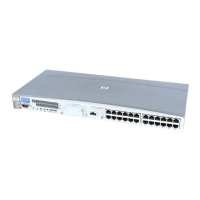run {
allocate channel dev1 type 'sbt_tape' parms
'SBT_LIBRARY=Path_to_Data_Protector_MML,
ENV=(OB2BARHOSTNAME=virtual.domain.com)';
restore datafile '/opt/ora9i/oradata/MAKI/example02.dbf';
release channel dev1;
}
Prerequisites
• An instance of Oracle must be created on the system to which you want to restore
or duplicate the database.
• The database must be in the Mount state if the whole database is being restored,
or in the NoMount state if the control file is being restored or a database
duplication is performed.
Restoring from backup media to the application system on LAN
You can restore the database objects using one of the following tools within Data
Protector:
• Data Protector GUI. See “Restoring Oracle using the Data Protector
GUI” on page 104.
• RMAN. See “Restoring Oracle using RMAN” on page 123.
Restoring Oracle using the Data Protector GUI
For restore, RMAN scripts are generated with necessary commands, depending on
selections made in the GUI. To use additional commands, use them manually from
RMAN itself. You can also use the workaround described in
“How to modify the RMAN restore script” on page 161.
Restoring database items in a disaster recovery
In a disaster recovery situation, database objects must be restored in a certain order.
The following list shows you in which order database items must be restored. Under
normal conditions it is possible to restore database items in any order.
1. Restore the recovery catalog database (if it was lost)
2. Restore the control file
3. Restore the entire database or data items
Data Protector Oracle ZDB integration104

